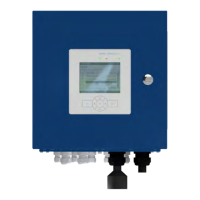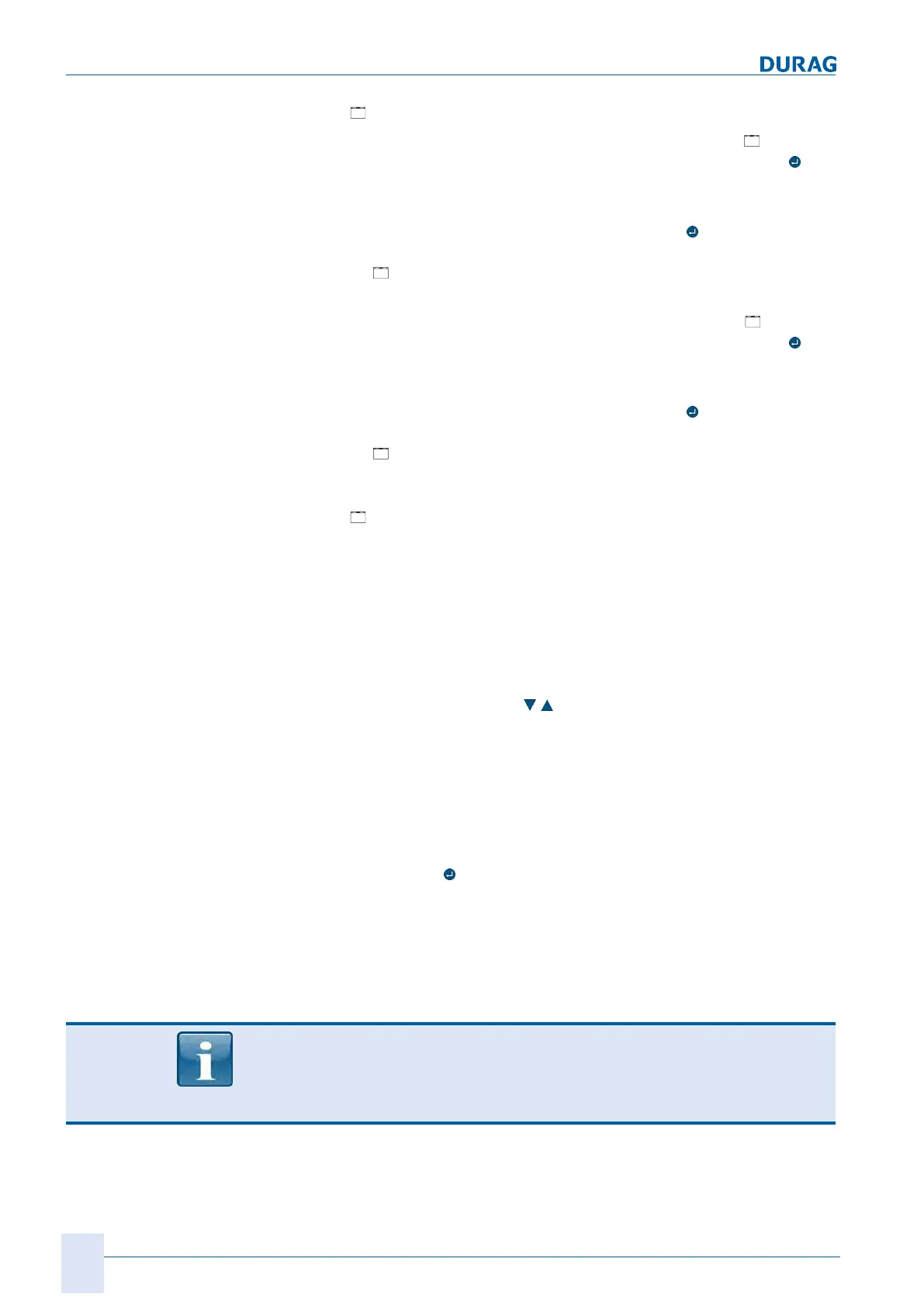15 | Examples of settings
180
D-ISC 100 x xx2
[
Setting the change-over value]
1.
First, use the arrow keys on the keypad to select [
Change-
over value 1], and confirm the selection by pressing the
key.
2.
Use the arrow keys to set the desired value (as a physical
unit of the measured value) and press the
key to confirm.
[
Change-over value1] indicates the value at which the sys-
tem switches to the 2ndoutput range (see Fig.15.38).
3.
Then use the arrow keys on the keypad to select [
Change-
over value 2], and confirm the selection by pressing the
key.
4.
Use the arrow keys to set the desired value (as a physical
unit of the measured value) and press the
key to confirm.
[
Change-over value2] indicates the value at which the sys-
tem switches back to the 1stoutput range (see Fig.15.38).
[
Activating the change-over value]
In order to ensure that the D‑ISC100 will now use the ranges
that have been set, Automatic mode must be activated. If the
ranges are not changed over automatically, there exists the op-
tion of specifying which of the two ranges should be used.
1.
To do this, use the arrow keys to navigate to the
Setup
entry
(right at the bottom outside the visible menu area; see
Fig.15.39).
2.
Use the arrow keys (
) to select one of the following val-
ues:
●
0
Activate the automatic change-over between output
ranges
(the two ranges are used, depending on the current meas-
ured value).
●
1
Output range1 is used
●
2
Output range2 is used
Press the
key to load the selected value.
If the range change-over is activated, the output range currently
used by the analogue output is not automatically displayed or
loaded. The Information about the range currently used is con-
tained within the status of the respective analogue output.
If the measured data is being transferred to a central PLC [}204],
the status of the output range currently being used may therefore
need to be called up and transferred to the external evaluation
unit (PLC) via the digital output.

